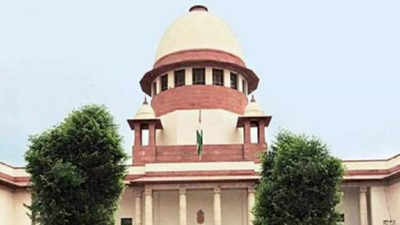Context
-
Recently, the Centre approved Transfer of HC Judges, accepting the recommendations of Supreme Court collegium headed by Chief Justice of India.
Key Details
- The collegium had recommended the transfer of 18 high court judges, five chief justices of high courts and the appointment of 8 Chief Justices of high courts.
- While the appointments and transfers of chief justices of high courts were cleared by the Centre this month, at least 11 transfers are still pending.
Back to Basics
Transfer of HC Judges
- The Constitution of India confers the power for the appointment and transfer of the judges.
- The Constitution restricts the power of the legislature when it comes to decision making with respect to appointment, removal, tenure, salaries, and transfer of high court judges.
- The underlying object in these provisions of the Constitution regarding high courts in states is judicial independence.
- These transfers are not out of the ordinary in India. However, at times some transfers cast doubt on judicial independence.
Constitutional provisions
- Article 222 of the Constitution of India deals with the procedure relating transfer of judges from one high court to another.
- Article 222 empowers the President to transfer a judge from one high court to another.
- This transfer however must be done in consultation with the Chief Justice of India.

- The judge who is being transferred is also entitled to receive a compensatory allowance.
- The initiation of the proposal for the transfer of a Judge should be made by the Chief Justice of India whose opinion in this regard is determinative.
- Consent of the Judge for his first or subsequent transfer would not be required.
- CJI is expected to take into account the views of the Chief Justice of the High Court from which the Judge is to be transferred and Chief Justice of the High Court to which the transfer is to be effected.
- The views of one or more Supreme Court Judges who are in a position to offer his/their views are also taken into account.
The Collegium system
- The Supreme Court collegium is a system looking after the appointments, elevations of lawyers, and judges to the supreme court and high courts in India. Not only that the system also looks after the transfer of judges from one court to another.
- The collegium consists of the Chief Justice of India and 4 senior-most judges of the Supreme Court of India. There is no provision in the Constitution providing for a formation of a collegium. Therefore the constitution of the collegium system is an innovation of the Supreme Court.
SC judgements on transfer of hc judges
After some judges were superseded in the appointment of the CJI in the 1970s, there was a perception that the independence of the judiciary was under threat. This resulted in a series of following cases:
- The ‘First Judges Case’ (1981) ruled that the “consultation” with the CJI in the matter of appointments must be full and effective. However, it rejected the idea that the CJI’s opinion should have primacy.
- The ‘Second Judges Case’ (1993) introduced the Collegium system, holding that “consultation” really meant “concurrence”. It added that it was not the CJI’s individual opinion, but an institutional opinion formed in consultation with the two senior-most judges in the Supreme Court.
- On a Presidential Reference for its opinion, the Supreme Court, in the Third Judges Case (1998) expanded the Collegium to a five-member body, comprising the CJI and four of his senior-most colleagues.
- Thus the Collegium of judges is the Supreme Court’s invention and is not mentioned in the Constitution.
- In case of selection and transfer of HC judges, the collegium consists of CJI, 2 senior most judges of the SC and CJ of the concerned High Courts. All such transfers must be made in the public interest, that is, “for the betterment of the administration of justice”.
IAS Abhiyan is now on Telegram:
- Abhiyan Official Telegram Channel: Click Here to Join us
- For Mains Value Edition (Facts, Quotes, Best Practices, Case Studies): Click Here to Join us
Constitution and Polity Current Affairs : Click here
